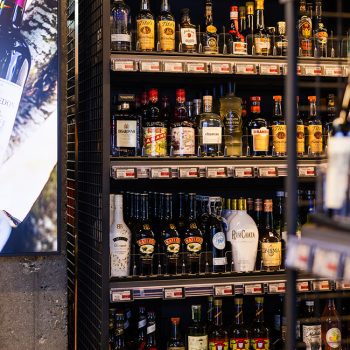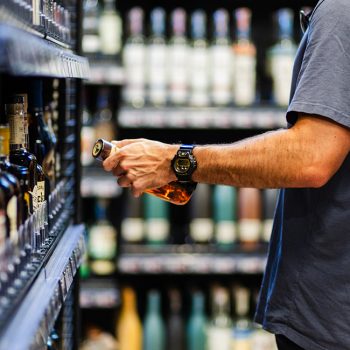The US: a land of opportunity for spirits?
As pandemic-related trends fade further, the US spirits market sees a promising, if challenging, future.

*This feature was originally published in the July 2024 issue of The Spirits Business magazine.
Effects of the Covid-19 pandemic continue to shape the US spirits industry, but producers, wholesalers, retailers and bartenders are monitoring trends that forecast, if not a return to pre-pandemic levels, then a new landscape full of opportunity. If drinkers were previously treating themselves to expensive bottles at retail, they have shifted their focus. SipSource reports bottles at US$100 and over have continued to decline by nearly 20% in volume since mid-2022.
Instead, consumers are spending more in the US$50-US$99 price segment, led by Tequila reposado, which is up by 13%. Indeed, Tequila remains a hit commodity in the US, but whereas celebrities once drove the market, a more knowledgeable consumer is increasingly seeking additive-free options or brands with an authentic story to tell.
 Marques Warren, owner of Downtown Spirits in Seattle, points specifically to Tequila Ocho as showing traction with consumers, while single-serve products like agave and vodka-based canned cocktails continue to resonate. “Every challenge presents an opportunity, and while the Covid-era bump in sales was significant, it was never to indicate a permanent shift in consumer behaviour,” Warren says. “Our customers have not stopped stocking up on Bourbons and other more elusive, sought-after whiskeys. However, core brands that sit at attainable, value-driven price points are outperforming their upmarket counterparts.”
Marques Warren, owner of Downtown Spirits in Seattle, points specifically to Tequila Ocho as showing traction with consumers, while single-serve products like agave and vodka-based canned cocktails continue to resonate. “Every challenge presents an opportunity, and while the Covid-era bump in sales was significant, it was never to indicate a permanent shift in consumer behaviour,” Warren says. “Our customers have not stopped stocking up on Bourbons and other more elusive, sought-after whiskeys. However, core brands that sit at attainable, value-driven price points are outperforming their upmarket counterparts.”
Joe Beatrice, founder of Barrell Craft Spirits, in Louisville, Kentucky, echoes this sentiment, noting that because the US$200-plus market has taken a larger hit than any other segment, the company will decrease its volume in that sector to match waning consumer demand.
“The premium market is absolutely not dead but the rate of increase is slowed in some instances,” Beatrice says. When Barrell launched 11 years ago, US$50 was considered premium, and Beatrice saw an opportunity to push that price point higher, entering the market at US$90. Last year, Barrell released its first non-cask-strength whiskey, Foundation, priced at US$50. “You’ve got to look at things on a relative basis,” Beatrice says. “Even if the ultra-premium market ends up at US$100, it’s still double what it was 10 years ago.”
Global inflation is certainly one cause for these shifts in spending, and as people return to bars and restaurants, they are simply finding different occasions and ways to treat themselves. SipSource analysts believe many brands in the US$25-to-US$50 price point will continue to perform well as consumers seek more affordable options. This is especially true in the on-premise, where a signature cocktail can be seen as an affordable luxury for many consumers.
Legacy bars rebound
Bradley Thomas Stephens, vice-president of the United States Bartenders’ Guild (USBG), says that legacy bars, or long-standing places that don’t rely on marketing but rather are embedded as part of a city’s entity are mostly rebounding, while smaller ‘mum-and-pop’ shops and newly opened establishments face a steeper battle.
“Many colleagues that are small business owners have told me that 2018 numbers feel so far away now that profits of yore just don’t feel possible sometimes,” Stephens said. “The good news is that it does feel like we are getting there. We are seeing a spike not seen in decades of new bar and restaurant openings; the hope is that as many of those as possible will thrive.”
As for trends, Stephens points to Highballs on draft, additive-free Tequilas, and an increasing number of zero-proof options. People want to glance at cocktail menus, he says, and not be overwhelmed with too much descriptive text.
And while hybrid work models mean people are in downtown areas less, creating a drop-in daytime and nightlife business for small to medium markets, he notes domestic tourism to popular drinking cities like New Orleans and Las Vegas is providing a much-needed economic boost.
Colin Spoelman, founder and distiller at Brooklyn’s Kings County Distillery, has observed many of these trends, especially as he toured the country for his book, A Bourbon Drinker’s Companion, which was released in May. “Whether 2023 was an anomaly in the market because of Covid-19, stocking questions, and pattern shift, or whether that was the beginning of a broader trend of people turning away from whiskey is a pretty open question,” Spoelman says. “At this moment there’s more ambition in the marketplace than there are consumers. And there are new entrants that have a very significant lift to present something truly new and differentiated to the whiskey scene.”
There has long been speculation that the Bourbon bubble was set to burst. Either because of that outsized ambition or lingering Covid effects, 2024 has already seen a few craft distilleries close, including Golden Moon in Colorado and One Eight in Washington DC. Spoelman contends it will be increasingly hard for small brands to break through without a serious competitive advantage, and Beatrice predicts the American whiskey shelf will continue to evolve.
 Reactive destocking
Reactive destocking
Part of that is a result of reactive destocking, by which producers continue to sell to wholesalers, but without sustained sales on the retail level, meaning product remains dormant on the shelf or in off-site warehouses. Beatrice posits that people have reduced their spending, purchasing one bottle at a time instead of two.
“People are actually normalising their inventories as well. They have a lot of products in their own home bars, and they’re drinking them,” Beatrice said. “You’re seeing this dynamic played out in all three of the markets. It’s in the consumer market, it’s in the retail market, it’s in the distributor markets – all normalising.”
The Wine & Spirits Wholesalers of America (WSWA) supports this theory, saying that it is seeing inventory levels remain low at retail, which is causing increased inventory at the wholesaler level.
Looking ahead to the remainder of the year, there is promise of increased spending but a pending presidential election has potential ramifications for the industry at large. The WSWA says it is focused on two key legislative issues: the possible expiration of the 199A Tax Deduction, which allowed millions of family-owned businesses to reinvest in their employees, facilities, delivery vehicles and local communities, and the 2025 Dietary Guidelines review process.
There is also heightened attention to cannabis beverages and non-alcoholic canned cocktails, though the WSWA views the latter as a chance for consumers to introduce cocktails into new occasions in a responsible manner, while still falling under the wider cocktail umbrella.
Spoelman, meanwhile, doesn’t view the non-alcoholic cocktail trend as a threat to the spirits market. “In New York, we see the spear-tip of a lot of trends. If what we’re seeing in the market is true, the non-alcohol period, at least in terms of its depressing effects on spirit sales, is normalising.”
How has cocktail culture changed over recent years to emphasise adventure and playfulness?
Georgia Dina Konstantopoulos – marketing communication manager, Creamy Creation
“Bars are recreating established, popular cocktails such as Espresso Martinis with their own signature take, to incorporate unique ingredients such as oats, cream, matcha, or different alcohol sources. Mixologists are also experimenting with creative presentations and formats. A great example of that is the rise in popularity of frozen cocktails with bold colours, which aim to create a memorable, year-round multi-sensory experience with a touch of nostalgia. With the natural link between cream liqueurs and desserts, we’ve always kept a close eye on the dessert menu. We normally receive requests for dessert-type flavours but have seen a surge this year, driven by the trends of indulgence and nostalgia.”
What are the challenges and opportunities of entering the US market?
Damola Timeyin – co-founder, Spearhead Spirits
“The biggest challenge, particularly for an African spirits business, is distribution. There might be interest in your product, demand for it, but without the right distribution partner, it’s hard to get started. The opportunity for us was about introducing consumers to African provenance through spirits. When you’re the first, there’s massive responsibility, but it’s really exciting to be the one that defines what a whole continent could mean from a spirits perspective. The people who are interested in that may be of African backgrounds, then living in the United States, and just want the connection back home. I think our audience wants to discover something new, interesting, and different, and wants to discover Africa.”
Related news
Campari on reinvigorating Courvoisier in the US
